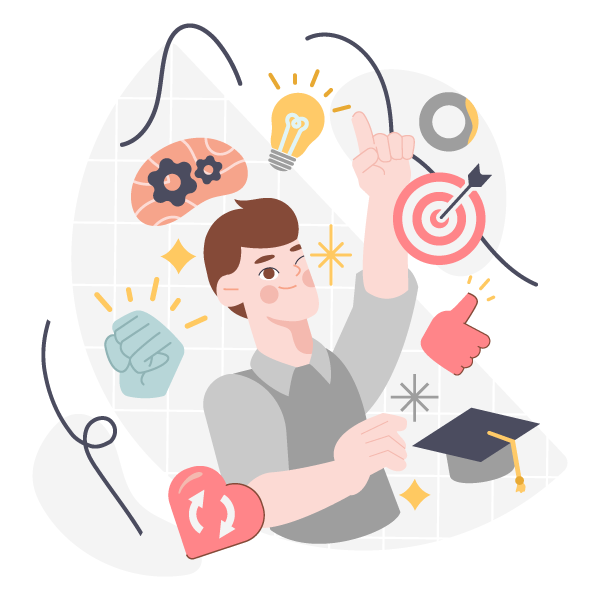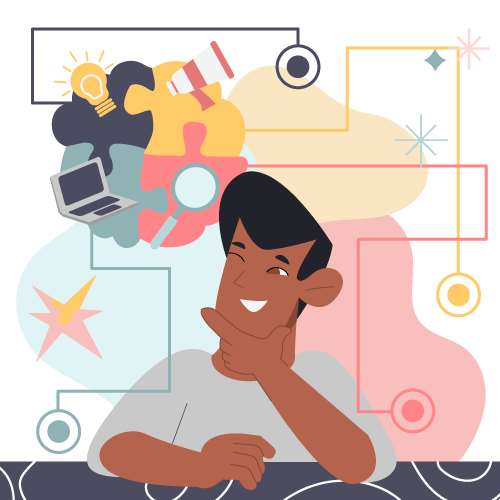Currently, workplaces worldwide are undergoing one of the most significant changes in recent memory.
AI has gone from being a buzzword or a gimmick into a crucial part of companies’ operations, permanently woven into everything from hiring processes and how new workers learn on the job. Despite the changes happening around us, however, many organizations are still clinging to training models that were designed for a pre-AI era.
AI has already changed the standards for how employees learn at work. The only uncertainty is whether your training model is sufficiently future-proof, or at risk of falling behind.
In this guide, we’ll explore some of the risks and rewards of AI models in employee training, and how you can find a model that sets up your workforce for long-term success.
The Benefits of AI Employee Training
Though AI training tech is still in its infancy, we’ve already seen early adopters reap a wide spectrum of rewards that haven’t been possible with previous iterations of HR and training tech.
Here are some of the key benefits of AI employee training you can experience with the right kind of implementation.
Hyper-personalization at scale
No two people are the same, and everyone will bring their own requirements to personal development. This is an area where traditional e-learning often falls short, providing a certain baseline that everyone can use to some degree, but failing to adapt and meet the unique needs of the individual.
Modern, AI-driven platforms can closely analyze the way someone interacts with content, identifying where they’re getting stuck, and adapting their learning journey in real time. This is especially powerful in creative disciplines such as graphic design courses, where learners benefit from content tailored to their unique strengths and styles.
Instead of giving your workforce a one-size-fits-all approach, each employee can benefit from their own tailored learning experience, matching their pace, learning style, strengths, and weaknesses.
High ROI and Efficiency
In the past, employee training has been a huge cost across different organizations, but AI coaching tech is beginning to flip this narrative.
When you’re able to automate away tasks like progress tracking, quiz grading, and course generation, your L&D team can focus more of their bandwidth on strategy and creativity. This supports a long-term future where a bigger proportion of your workforce can reach their goals.
An impressive ROI has also established AI training models not only as a way to improve efficiency, but as a competitive advantage too, helping to reach effective training outcomes for an entire workforce at a fraction of the cost of traditional training.
Democratizing L&D
One of the most unique traits of AI training is its potential to increase accessibility to learning and development across your organization.
Unlike older forms of e-learning, AI platforms can translate learning materials into multiple languages, create captions and transcripts in real time, or even adapt material into new versions for neurodiverse employees.
When 91% of workers say they want personalized training, going the extra mile to ensure your employees are getting what they need can make all the difference to long-term outcomes.
The Risks of AI Employee Training
While AI employee training certainly has a lot of potential, it’s not a magic bullet, and it can even do more harm than good if it’s not implemented correctly.
Now that we’ve covered the benefits, let’s explore some of the ways that AI training can go wrong.
The AI Training Gap
Regardless of your business’s size, niche, or other variables, you’ll need to contend with a universal AI training gap that’s been affecting artificial intelligence tools across the board.
According to a Clutch survey, 74% of employees use AI on the job, but only 33% of those employees have received formal training on how to use AI tools.
The assumption that AI tools can do it all in anyone’s hands can result in the dangerous misuse of AI training models. Employees could inadvertently create models that generate biased outputs, mishandle sensitive data, or take inaccurate information as fact.
If these issues are left to persist for too long and corrupt your training models, AI could become a liability at your business, rather than a benefit.
Resistance and Mistrust
Even with tools designed to support workers’ personal development, there’s still a lot of resistance and mistrust surrounding the technology that may limit its potential in your company.
Many workers fear that their jobs could be made obsolete by AI, or simply feel apprehensive about the breakneck speed with which AI is changing the corporate landscape.
To get the maximum value possible from AI training at your organization, you’ll have to address these fears proactively with transparency and open communication, as well as an aim to cultivate an internal culture of trust.
Risk of Burnout
Unlike human coaches or line managers, an AI doesn’t have an unspoken “feel” for how much guidance is too much. This has the potential to create situations where AI training is introduced to accelerate learning and development, but ends up overwhelming your employees.
Poorly-implemented AI training can easily turn into a constant barrage of notifications, scorecards, and automated reminders that lack any kind of human context. Over time, this experience can start to feel less like coaching and more like surveillance.
As you research different tools and plan to bring AI training into your business, it’s crucial to leave room for fairness and transparency, ensuring your workers feel in control of their learning, rather than controlled by it.
Ways to Get AI Training Right
Reaping the rewards of AI vocational training is a tightrope act.
You’ll need to implement it with enough enthusiasm to ensure it actually makes a difference at your company, without being too aggressive and running headlong into its pitfalls.
The right implementation strategy will depend on your company’s size, goals, and the needs of individual employees. However, you can still get off to the right start and future-proof your AI training models by following some universal best practices…
- Promote AI Literacy: Understanding some basics about how AI works, how to correct outputs, and guide tools to the right result are critical. This is true not only for your L&D team, but also the end users who will be using training materials.
- Mix AI and Human Coaching: AI is great at scale and consistency, but lacks the empathy and nuance of a human teacher. By leveraging both humans and AI in your employee training, you’ll avoid overwhelm and future-proof your approach to employee development.
- Upskill Everyone: Isolating AI training to one or two departments will limit its potential and potentially leave parts of your workforce behind. To truly futureproof your HR, you should aim to scale AI training across the organization, and make it a foundational experience for all.
- Track, Measure, Iterate: Like any new tech, AI-driven learning needs to be accompanied by close observation and tweaks to ensure it’s having the intended effect. Whatever AI training resources you use, be sure to plan for periodical assessments and improvements based on training outcomes as you roll them out.
Making AI Training Work for You
Though technology as new as AI certainly comes with its risks, anticipating these pitfalls and taking an active role in training implementation can unlock a whole range of positive outcomes that will help you get ahead of the competition.
For more support on getting L&D right at your organization, be sure to browse our other blog posts, or read about how our corporate training services can help you.





